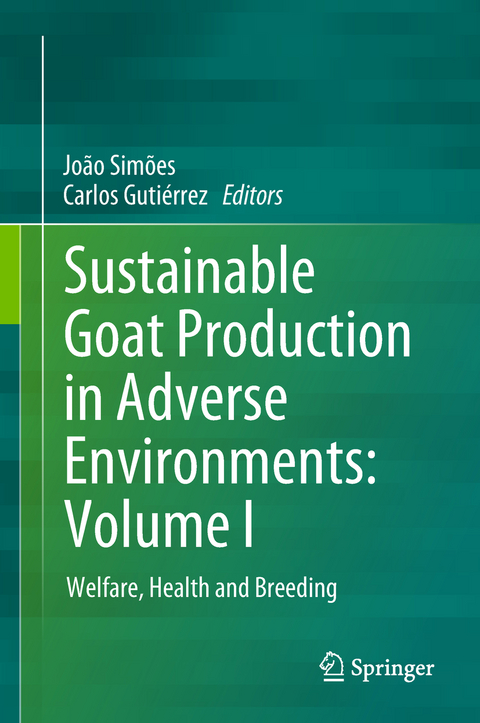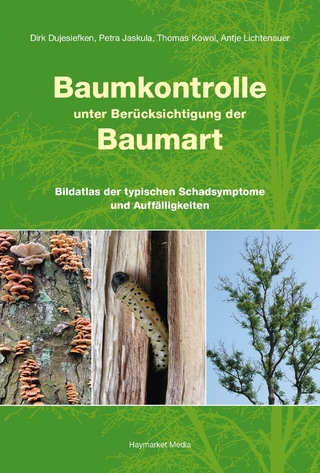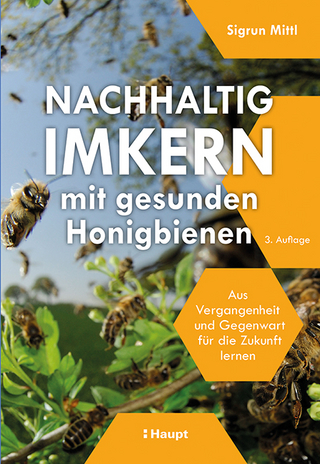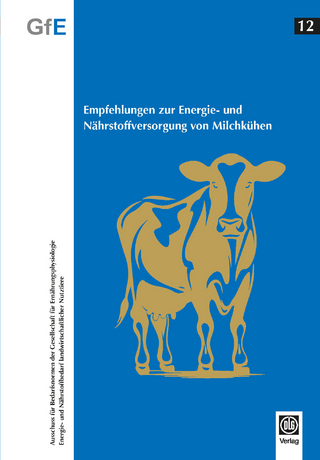
Sustainable Goat Production in Adverse Environments: Volume I
Springer International Publishing (Verlag)
978-3-319-71854-5 (ISBN)
This book explores the current trends and challenges of sustainable goat meat and milk production in different global contexts, providing valuable insights into this industry in adverse environments like mountain, semiarid and arid regions. It also includes contributions from international experts discussing goat reproduction, genetic diversity and improvement, as well topics such as animal health, welfare, socioeconomic aspects, and many other issues regarding the environmentally friendly and economically viable exploitation of goats.
This is a highly informative book providing scientific insight for readers with an interest in sustainable agriculture and socio-economic aspects, as well as goat breed conservation, genetic diversity, and veterinary care. These subjects are complemented in a second volume providing a detailed description of more than 40 indigenous goat breeds and several ecotypes found in Asia, Africa, Europe, and America.
João Simões Born in 1967 in Portugal and son of small farmers, João Simões soon developed an affinity for agriculture and livestock that was to shape his professional life and career. From 1993, as a DVM he mainly worked in large-animal clinics. Simultaneously, he joined the Portuguese academy as a professor at the School of Veterinary Sciences, University of Trás-os-Montes e Alto Douro. His academic research is focused on goat reproduction, and he obtained his PhD degree in Veterinary Science on the subject in 2004. He has written numerous scientific and technical publications in collaboration with veterinary students, producers and national agricultural associations. He lives with his wife and two small children in the mountain region of northeast Portugal. Carlos Gutiérrez Carlos Gutiérrez received the DVM in 1986, Diploma in Public Health in 1988, PhD in 1995, M.Sc. in 2003, and Diplom ECSRHM in 2013. Currently, he is a professor at the School of Veterinary Sciences, University of Las Palmas de Gran Canaria, Spain, and Head of the Large Animal Unit, Teaching Veterinary Hospital. He is particularly interested in tropical animal diseases (trypanosomosis in particular), zoonosis and metabolic diseases affecting dairy goats.
Section I Sustainability and Socio-Economic Aspects in Goat Production.- 1 Introductory.- 2 Sustainability of Local Goat Genetic Resources in the Mediterranean Region.- 3 Socio-economic Aspects of Goat Farming in Arid Environments.- 4 Innovative use of sheep and goats by women in climate smart villages in Kenya.- Section II Reproductive Strategies and Genetic Improvement.- 5 Reproductive strategies for goat production in adverse environments.- 6 Using socio-sexual stimulations for sustainable goat productions under subtropical latitudes.- 7 Genetic improvement for goat production.- 8 Threatened goat breeds from the tropics: the impact of crossbreeding using foreign goats.- Section III Goat Nutrition and Nutritional Disorders.- 9 Murciano-Granadina Goat Nutrition Including Local Feed Resources.- 10 Synergies between goat grazing and shrub biomass in mountain areas.- 11 Goat meat production in resource constrained environments and methods to improve quality and yield.- 12 Nutritional and Metabolic Disorders in Goats.- Section IV Health Management and Public Health.- 13 Major infectious diseases with impact in goat production in North Africa.- 14 Tropical diseases in goats .- 15 Haemoparasitism of Goats and Sheep.- 16 Understanding Mastitis in Goats (I): Etiophysiopathology Particularities.-17 Understanding Mastitis in Goats (II): Micro-biological Diagnosis and Somatic Cells Count.- 18 Paratuberculosis and Tuberculosis in Goats.- 20 Study of Microbiological Safety of Goat Milk Products by Meta-Analysis.- Section V Climate Change, Environmental and Nutritional Stressors, and Goat Welfare.- 21 Climate Change and Goat Agriculture Interactions in Mediterranean Region.- 22 Impact of Adverse Environmental Stress on Productive and Reproductive Performance in Osmanabadi Goats.- 23 Health and welfare of indigenous breeds of Dairy Goats in Greece.- 24 Heat Stress Effects on Water Metabolism of Goats in Harsh Environments.- Section VI Conservation Priorities of Goat Populations.- 25 Conservation and utilization of indigenous goat breeds in China.- 26 Genomics for the Improvement of Productivity and Robustness of South African Goat Breeds.- 27 Nuclear and Mitochondrial Markers Based Diversity and Population Structuring of Indian Goats.- 28 Analysis of Conservation Priorities of Goat Populations from Southwestern Europe Based on Autosomal Microsatellite Markers.
"The book will be very useful for everyone working with goats. ... Definitely, a well-worth addition to an establishment's library for the benefit of all those working with goats." (G.C. Fthenakis, Small Ruminant Research, 2018)
“The book will be very useful for everyone working with goats. ... Definitely, a well-worth addition to an establishment’s library for the benefit of all those working with goats.” (G.C. Fthenakis, Small Ruminant Research, 2018)
| Erscheinungsdatum | 07.02.2018 |
|---|---|
| Zusatzinfo | XXIX, 539 p. 93 illus., 74 illus. in color. |
| Verlagsort | Cham |
| Sprache | englisch |
| Maße | 155 x 235 mm |
| Gewicht | 1011 g |
| Themenwelt | Weitere Fachgebiete ► Land- / Forstwirtschaft / Fischerei |
| Schlagworte | Adverse environments • Animal sustainable production • Genetic biodiversity, conservation and improvement • Goat production • Indigenous goat breeds • Infectious Diseases • Model vertebrates • Veterinary Medicine |
| ISBN-10 | 3-319-71854-1 / 3319718541 |
| ISBN-13 | 978-3-319-71854-5 / 9783319718545 |
| Zustand | Neuware |
| Haben Sie eine Frage zum Produkt? |
aus dem Bereich


